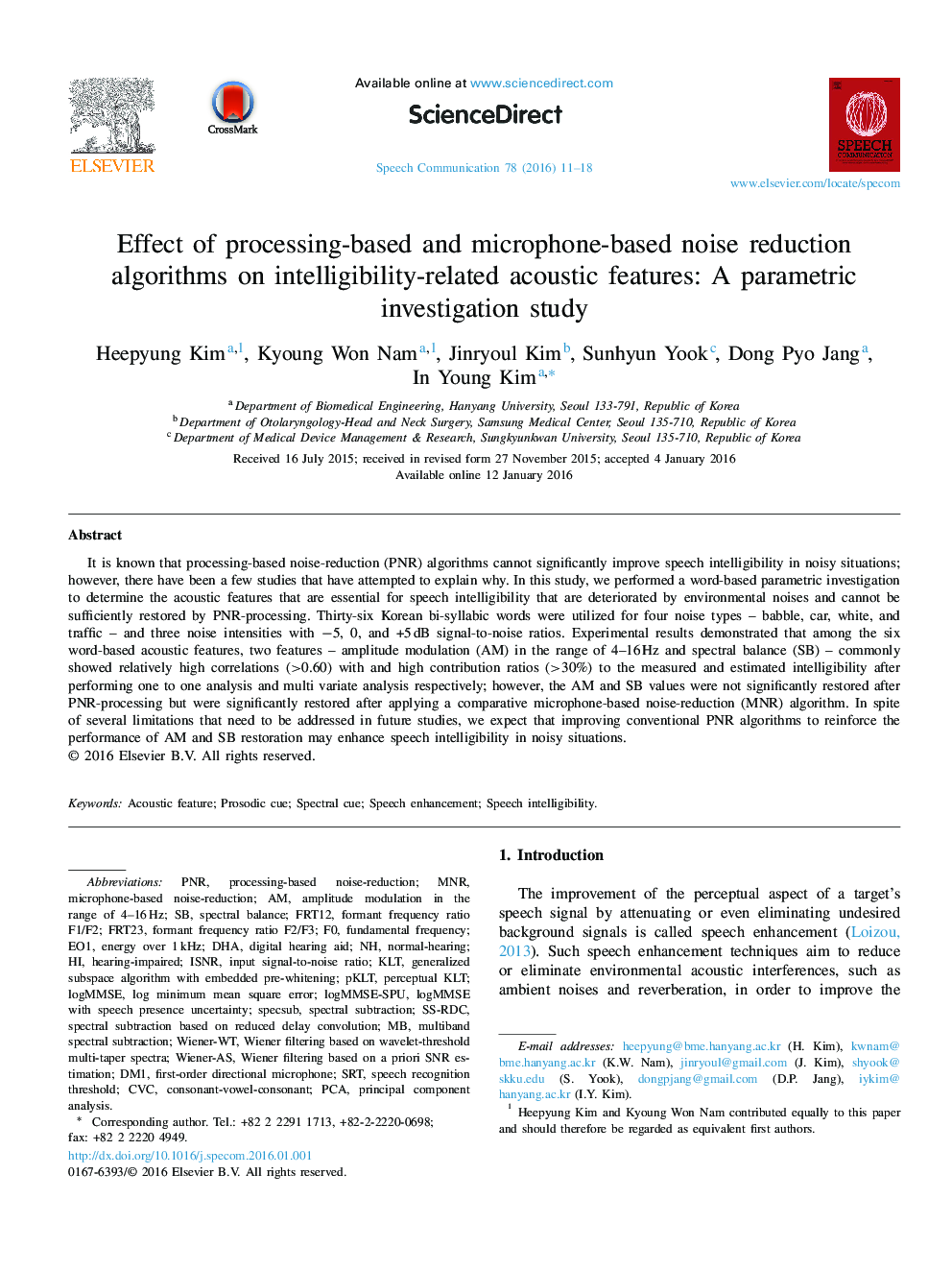| Article ID | Journal | Published Year | Pages | File Type |
|---|---|---|---|---|
| 565276 | Speech Communication | 2016 | 8 Pages |
•Effects of PNR and MNR on six intelligibility-related acoustic features were investigated.•Measured speech intelligibility using a test in Korean.•AM and SB showed high correlation with /and contribution ratio with/to speech intelligibility.•MNR significantly restored AM and SB after processing but PNR did not.•This may result in a performance difference between PNR and MNR in noisy environments.
It is known that processing-based noise-reduction (PNR) algorithms cannot significantly improve speech intelligibility in noisy situations; however, there have been a few studies that have attempted to explain why. In this study, we performed a word-based parametric investigation to determine the acoustic features that are essential for speech intelligibility that are deteriorated by environmental noises and cannot be sufficiently restored by PNR-processing. Thirty-six Korean bi-syllabic words were utilized for four noise types – babble, car, white, and traffic – and three noise intensities with −5, 0, and +5 dB signal-to-noise ratios. Experimental results demonstrated that among the six word-based acoustic features, two features – amplitude modulation (AM) in the range of 4–16 Hz and spectral balance (SB) – commonly showed relatively high correlations (>0.60) with and high contribution ratios (>30%) to the measured and estimated intelligibility after performing one to one analysis and multi variate analysis respectively; however, the AM and SB values were not significantly restored after PNR-processing but were significantly restored after applying a comparative microphone-based noise-reduction (MNR) algorithm. In spite of several limitations that need to be addressed in future studies, we expect that improving conventional PNR algorithms to reinforce the performance of AM and SB restoration may enhance speech intelligibility in noisy situations.
